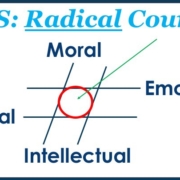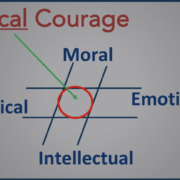Three Ways to Reduce Employee Turnover
Hire qualified people who fit your company’s culture and you will reduce the costs associated with turnover and disengagement.
Three Ways to Reduce Employee Turnover

Reduce employee turnover
“Employee turnover is killing us,” Johnny told me. “We had a nearly 100 percent turnover last year. We can’t create any momentum. Projects get stalled. Our leaders get consumed in the hiring process rather than serving our clients. Our clients get upset. We cannot survive like this.”
The Problem
Employee turnover is a silent revenue-killer. Employees tend to leave organizations due to unhappiness rather than seeking better pay and benefits. Hiring and training a new manager could be as high as 50% – 200% of the position’s annual salary.
What Gives?
Employers tend to hire for talent rather than for culture. A myriad of technological tools rarely help. As a result, employers often hire people who are not a good fit for their culture. This practice can create a toxic work environment that drives away your talent. 46% of employees reportedly leave within 18 months, 89% of those due to culture.
Solutions
1) Define your ideal workplace culture (our tool can help – click HERE).
2) Align your values and workplace culture
3) Screen for qualified people that fit your workplace culture. It is much easier to train jobs skills than to change a person’s workplace habits.
Heading over a cliff
“Johnny” was a senior leader in an organization that was heading over a cliff. Employee turnover was a symptom of larger issues: a chaotic work environment, shifting priorities, and no strategy. “Winging it” had enabled the organization to seize emerging opportunities and gain some early clients. But that mode of operating had become a habit — the company was chasing cash. They were in peril.
The BIG 3
They needed help getting the 3 BIG things right: Leadership, Culture, and Strategy. This included creating a proper strategy and implementation plan, instituting some procedural discipline, and getting the culture right. The last one would be the most challenging.
The company had tried to address the problem by organizing “culture days.” They spent time doing interactive exercises to get to know one another better. They had so-called “radical candor” sessions. They argued over and selected their values. They felt good for a few days. Things seemed to get better.
Reality
Then reality struck. Within a week the same old problems and practices were back. Employees grew more disillusioned. Several quit.
“We’ve got to stop the bleeding,” Johnny told me. Even the best strategy would not overcome the culture problems the company was facing.
“How well do your values align with your workplace practices, Johnny?”
“Don’t you mean: how well do our workplace practices align with our values?”
“Is there a difference in the two statements?” I asked.
“The answer on alignment is ‘Not well.’ The way I phrased it suggests we should align our workplace practices with our values. That’s what everyone teaches. You phrased it differently — your values should align with your workplace practices. Isn’t that backwards?”
Employee turnover plunged
Their values list was heartwarming — focused on cooperation and happiness. The founder actually ran the company on creativity and agility — even if that meant a chaotic work environment. No amount of culture days would change the founder’s DNA.
Johnny understood that he needed to hire employees who could thrive given the organization’s realities. To add candor and avoid cynicism, he recognized that the company would need their values to reflect what they expected in practice.
Johnny began to hire for culture. The company had what we call an Innovative culture. They valued creativity and results over process and co-working relationships. In the hiring process, Johnny deliberately sought qualified people who could thrive in their workplace. Employee turnover plunged.
Hire for culture – deliberately
Gregg Williams, the interim Head Coach of the Cleveland Browns in the latter half of 2018, hires deliberately for culture. He emphasizes a cooperative culture: teamwork and execution over individual stats and player creativity. He starts players who show they have bought into the culture. The Browns won 5 games in the second half of the season — more than they had in the previous 3 seasons combined.
Aligning values and culture improves employee engagement and reduces turnover. Use our tool below to discover your ideal culture archetype — Cooperative, Collaborative, Authoritative or Innovative. Once you have established your ideal culture, align your values accordingly.
The bottom line
Hire qualified people who fit your company’s culture and you will reduce the costs associated with turnover and disengagement.









